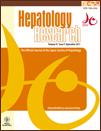Four-year follow-up of two chronic hepatitis B recipients of hepatitis B surface antigen-positive cadaveric liver grafts from asymptomatic carriers
Abstract
Aim: Only seven cases of liver transplantation (OLT) with positive serum hepatitis B surface antigen (HBsAg) grafts have been reported in the world till now. Here we report the 4-year follow-up results and clinical pathologic characteristics of two recipients of chronic hepatitis B transplanted with HBsAg-positive cadaveric liver grafts from asymptomatic carriers.
Methods: Lamivudine combined with hepatitis B immune globulin were used for the control of hepatitis B virus (HBV) infection in both of the recipients post-OLT. The liver functions, virus status and pathologic characteristics of two recipients were followed up according to the rounte protocol of Liver Transplantation Center of West China Hospital.
Results: The serum HBV deoxyribonucleic acid (DNA) turned negative within 30 days post-OLT, but HBsAg remained positive for both of the recipients during follow up. HBV breakthrough occurred in one recipient at the month 12 post-OLT, with detectable serum HBV-DNA (740 copies/mL) and tyrosine-methionine-aspartate-aspartate motif mutation (rtM204I and rtM204V). After the replacement of lamivudine by adefovir dipivoxil 10 mg daily for 2 months, serum HBV-DNA of this recipient became undetectable again and maintained undetectable during follow up. Both of the recipients have survived for more than 4 years post-OLT, with stable liver function and mild hepatitis.
Conclusion: Due to extreme scarcity of liver graft, we think that HBsAg-positive liver graft without active HBV-DNA replication and severe pathological manifestation from asymptomatic carriers may deserve consideration when no other graft is available in a bearable waiting time.




